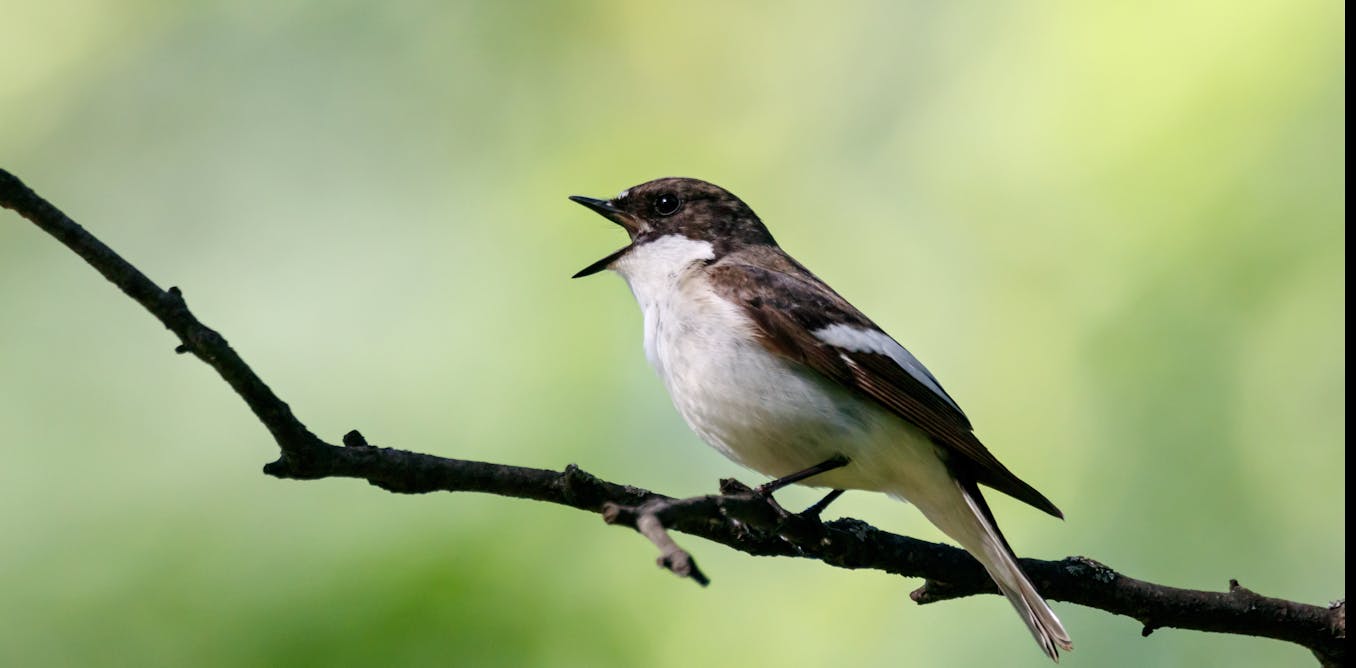With the arrival of spring, a timeless ritual begins anew: male birds fill the air with song, seeking to attract mates and defend their territories from other competing males.
But there is a lot we still don’t understand about how birds learn which sounds to sing. Our latest study offers new insights and suggests genes may play a more important role than scientists realised.
In nearly half of the world’s bird species, young birds learn by imitating the songs of adults. As birds learn songs from one another, mistakes inevitably happen, leading to variation in songs between populations of the same species, similar to the formation of dialects in human languages.
Female birds usually prefer males that sing songs typical of the local population, as it may show that they are well adapted to the nearby environment. Additionally, songs are crucial for defending territories. Male birds singing foreign songs often struggle to hold onto territories against local competitors.
This potential role as a mating and social barrier is why there has been a long-standing hypothesis that song differences can drive the formation of a new species.
However, scientists don’t yet fully understand what happens to these song differences when birds move between populations. Imagine you’re a local bird, and a newcomer arrives singing a foreign song. What’s to stop you from learning this new song? If enough local birds learn the songs of newcomers, it could erase the song differences between populations, and thus the mating barrier.
But birds tend to only learn songs from their own species, even when they are exposed to the birdsong of other species. This suggests that birds have genetic predispositions guiding them to learn only “appropriate” songs. So far, these genetic predispositions have only been shown to limit song learning from different species.
This raises an interesting possibility. Could these genetic predispositions also restrict song learning within the same species — and could it explain why some song differences are maintained across different populations of the same species?
There are a few lab-based studies that have explored this idea. But it has rarely been tested in the wild, where birds are exposed to songs from different populations and species.
That’s why we wanted to see whether these lab results would hold true if we took the test into the field.
Into the wild
In the spring seasons of 2017-2019, we translocated eggs of pied flycatchers (a small migratory songbird that breeds widely across Europe) from their nests in the Netherlands to a population in Sweden. We carefully transported these eggs to their new home, where they were placed in Swedish nests and eventually, raised by Swedish parents. Come winter, these translocated birds fledged and made the long journey to their wintering grounds in Africa, along with their Dutch and Swedish counterparts. With the return of spring, they flew back to Sweden, now as adults with fully formed songs, ready to find potential mates.
Jesus Giraldo Gutierrez/Shutterstock
We recorded the songs of these birds and compared them to the songs of their local Swedish environment where they were raised. We also compared them to songs of their ancestral Dutch population. Overall, songs of translocated males resembled songs of the Swedish population.
This came as no surprise, since we know that social learning plays a crucial role in song development for pied flycatchers. However, we discovered that translocated males did not just learn any Swedish song element — they learned those elements most similar to their ancestral Dutch population. This meant their songs did not completely overlap with Swedish ones but resembled both Swedish and Dutch songs. This suggests that the translocated males are genetically predisposed to learn songs of their ancestral Dutch population.
These findings show how genetic differences within a species can effect cultural change. We think that as songs continue to diverge between these two populations, the genetic predispositions should also become more distinct. Eventually, birds from the local population may not recognise immigrants from other populations as part of their own species as regional variations tend to become more pronounced over time. This co-evolution between genes and songs may reduce the likelihood of birds from different populations mating with each other, driving the formation of new species.

